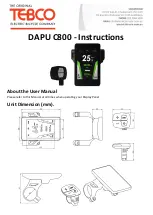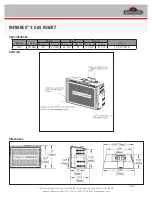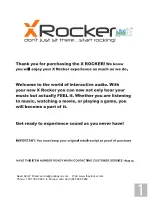
Co de 39
Nugget
Operating the Terminal in a Network
4-15
4
Master Polling Protocol
Master Polling Mode D protocol requires the terminal to ask the downline serial device
for data it may have (polling) and to request to send data to the serial device (selecting).
There is no automatic polling, so your application must poll periodically for data.
Before each transmit operation, the terminal issues the SEL sequence for the device
addressed and sends the data if an acknowledge is received. Before each receive
operation, the terminal issues a poll sequence and waits for data or the RES character (no
data is available to send). Here are the serial port parameters you can define:
•
Baud rate
•
Flow control
Polling Mode D Protocol
Polling Mode D protocol requires the host computer to ask the terminal for data it may
have (polling) and to request to send data to the terminal (selecting). Polling Mode D uses
an RS-232 or an RS-422 interface. Use this protocol if you want to connect to a 900
MHz RF network via the 9189 RF Gateway. Here are the serial port parameters you can
define:
•
Baud rate
•
Flow control
Configuring the Serial Port Parameters
The values you set for the terminal serial port must match the values set for the serial
port on the connected device. There are three ways to configure the terminal’s serial port
parameters:
•
Use the TRAKKER Antares 2400 Menu System. For help on configuring the
parameters, see “Configuring the Serial Port Parameters” in Chapter 1.
•
Scan the configuration command from a Code 39 or Code 93 bar code label. The
configuration commands are listed alphabetically by command name in Chapter 9,
“Configuration Command Reference.”
•
Send a command from an application through the serial port on the host computer.
For help, see the next section, “Configuring the Terminal Via the Serial Port.”
If you are configuring the serial port parameters in the TRAKKER Antares 2400 Menu
System, you may not see all of the serial port parameters until you set a value for another
key field. For example, EOM is a key field when you configure the Configurable
protocol. That is, several fields are invalid (do not appear) until you enable EOM.
If you are configuring the serial port parameters by scanning or sending configuration
commands, the terminal will accept and set all serial port commands. However, the
terminal only uses the parameters that are valid for the current protocol configuration.
For example, if you are using configurable protocol on COM1, you can set a value for
poll, but the terminal will not use it if handshake is not enabled.
Summary of Contents for Trakker Antares 2420
Page 1: ...TRAKKERAntares 2420and2425 Hand HeldTerminal P N 064024 006 User s Manual...
Page 15: ...nuggetf code39 Contents xv Glossary Index G I...
Page 16: ...xvi...
Page 24: ...xxiv...
Page 25: ...nuggetf code39 Getting Started 1...
Page 26: ...1 2...
Page 60: ...1 36...
Page 61: ...Learning How to Use the Terminal 2...
Page 62: ...2 2...
Page 103: ...Co de 39 Nugget Configuring the Terminal 3...
Page 104: ...Co de 39 Nugget 3 2...
Page 134: ...3 32...
Page 135: ...Operating the Terminal in a Network 4...
Page 136: ...4 2...
Page 173: ...Using Custom Applications 5...
Page 174: ...5 2...
Page 193: ...Troubleshooting 6...
Page 194: ...6 2...
Page 219: ...Running Diagnostics 7...
Page 220: ...7 2...
Page 243: ...Reader Command Reference 8...
Page 244: ...8 2...
Page 268: ...8 26...
Page 269: ...Configuration Command Reference 9...
Page 270: ...9 2...
Page 389: ...Terminal Specifications A...
Page 390: ...A 2...
Page 404: ...A 16...
Page 405: ...Full ASCII Charts B...
Page 406: ...B 2...
Page 415: ...International Character Support C...
Page 416: ...C 2...
Page 427: ...Using the Default Applications D...
Page 428: ...D 2...
Page 438: ...D 12...
Page 439: ...Glossary G...
Page 440: ...G 2...
Page 463: ...Index I...
Page 464: ...I 2...
Page 480: ...I 18...
















































